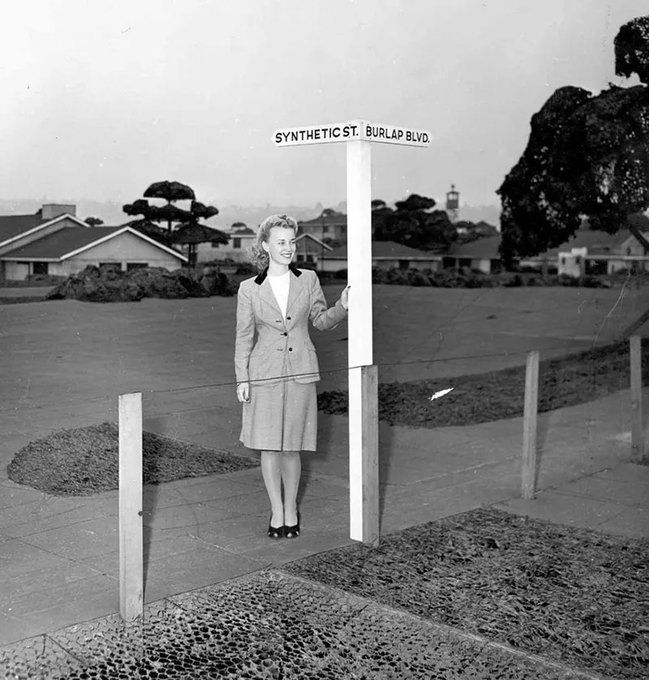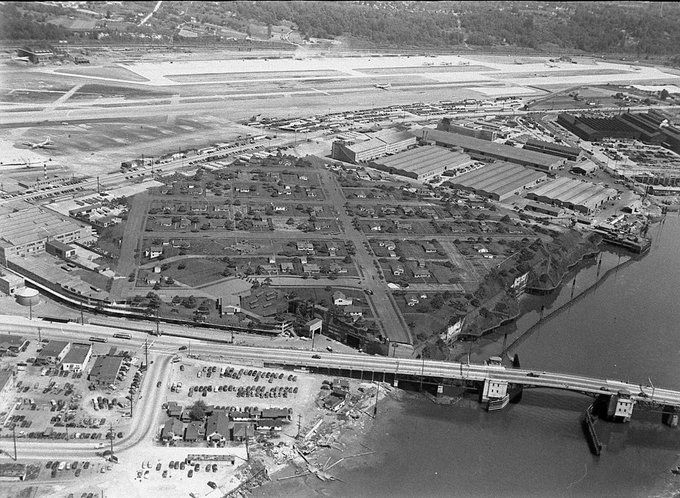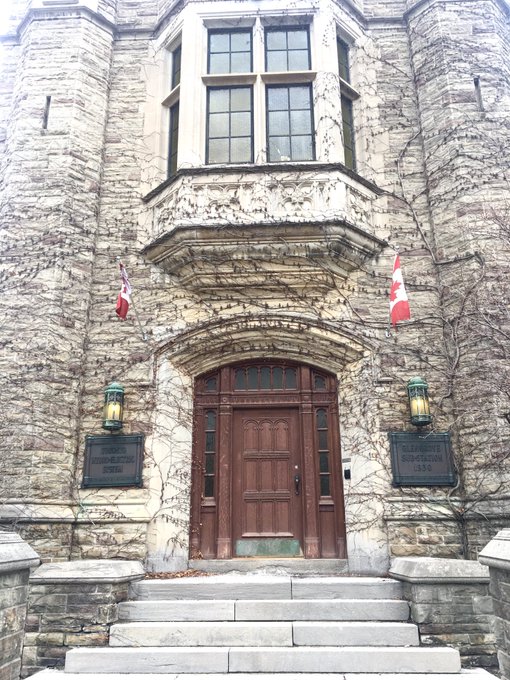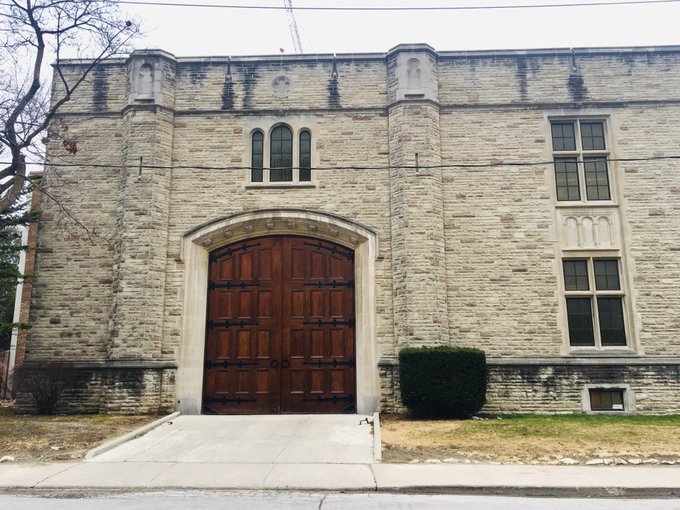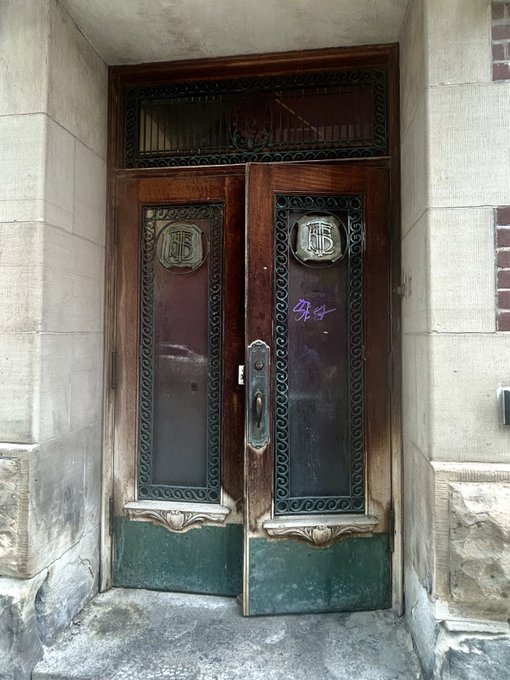Your City is Full of Fake Buildings - Here’s Why

November 6, 2024
•14 min read
Find out the fascinating reason why your city is full of fake buildings!
Where you live could be full of fake buildings. You might have walked the streets of your hometown countless times and never spotted them. But not everything around us is how it seems. There’s a secret underbelly hidden behind or beneath those familiar exteriors. Let’s find out why your city might be full of fake buildings.
58 Joralemon St. Facade
You’d think a city as crowded as the Big Apple wouldn’t have a lot of room for fake buildings. But that would be your first mistake. Joralemon Street looks like any other street in Brooklyn. Except it’s hiding one very dark secret. At first glance, house number 58 doesn’t stand out in any obvious way. It’s a little redder than its neighbors, but the longer you look, the more things seem a little weird.
The windows are fully blacked out so you can’t see in. There is a big metal hatch that blocks the basement, and the door, well, let’s just say you’d struggle opening this thing by yourself. But when the sun goes down things get really weird. Passers-by have claimed that in the dead of night, you can hear a mysterious humming noise coming from inside, and an ominous orange light glowing through the lip around the door.Luckily, this isn’t the home of some crazy Spiderman villain trying to blow up New York. 58 Joralemon Street is a fake house. Originally built in 1847, it was acquired by the Interborough Rapid Transit Company in 1908 who stripped and gutted the interior to create a ventilation shaft for the subway. It also doubles up as an emergency exit from the eastern end of the Joralemon Street Tunnel. This house keeps fresh air pumping into the subway and gives crew and passengers a way to escape. So, it’s perfectly innocent. The humming noise is probably passing trains, and the orange glow could easily be a safety light. Supposedly, inside it’s actually rather boring. Lots of industrial-looking structural ironwork and not a lot else. Furthermore, nobody outside of “the railway” is allowed in there.The Trompe-l'Oeil Facades Of Paris
New York isn’t the only country to conceal subway vents in creative ways either. If you’ve never been to Paris, you’re missing out. The long boulevards and old buildings make it one of the most beautiful cities in the world. However, some keen-eyed citizens have noticed something peculiar about a few of those buildings.
If you look closely at the windows, someone’s quite literally painted them on the side of the house! This is 29 Rue Quincampoix, and it’s not a real building. When the Paris metro was being expanded in the late ‘70s, there were huge issues around ventilation. Apparently, it’s inhumane to trap French people in a tiny tube traveling at high speed without any fresh air. But the city didn’t want to deface their beautiful districts by dotting fat, ugly chimneys all over the place.NY's Windowless 33 Thomas Street
Just a short journey across the East River from Joralemon Street is yet another New York fakery, except this one is much less subtle. Located at 33 Thomas Street, the former AT&T Long Lines Building is an imposing 550-foot presence on the New York skyline. However, what separates 33 Thomas Street from any other tall New York building is its utter lack of windows. That’s suspicious.
The official story goes that this building is a telephone exchange or wire center for connecting long-range communications, and I’m not saying it doesn’t do that. But there are some pretty wild theories about what else goes on inside these dark walls. Documents leaked by renowned whistleblower, Edward Snowden, and interviews with former AT&T employees provide compelling evidence that 33 Thomas Street has served as a National Security Agency surveillance site, code-named TITANPOINTE.Does that mean that it's a super-secret spy facility hidden in plain sight? The NSA and AT&T have a long history of working together. And a series of top-secret NSA memos suggest they’ve hijacked the phone wires from a secure location within the building. Here, they’ve tapped and illegally gathered intel on US citizens’ private communications for decades. So much for a simple little phone connection center. Undoubtedly, this supposedly innocent telephone connection tower was a secret spying facility, at some point in time at least. But there are a few really out-there theories that are hard to get behind. Some people think there’s no telephone connection center at all, and that it’s a cover story for a secret spy base, housing agents who specialize in international espionage. Others think it’s a real-life Men in Black complex full of aliens. Whatever the truth is behind 33 Thomas Street, it sure isn’t entirely what it claims to be.23-24 Leinster Gardens, London's Fake Houses
Along the leafy street of Leinster Gardens in London, this pair of five-story houses share the same balconies, columns and decorative features as every other house on the street, except for one key detail: 23 to 24 Leinster Gardens are only five-feet-thick. And that’s just the front.
During the 1860s the city was expanding the Metropolitan Railway and needed to dig a large trench to make the tunnel. Because the OG 23 and 24 Leinster Gardens were directly above the new track path, they met an untimely end. However, once the tunnel was finished, local residents complained that the gaping tunnel now in their place was an eyesore.Fake Lake
In Changsha, China, property Developers listed ads for an apartment complex with a beautiful man-made lake as a centerpiece. However, upon moving into these apartments, the residents were rather disappointed. It turns out the lake was a total lie made up by the developers to trick people! Instead, they’d added this blue plastic shape to the floor, which looks nothing like water even if you squint.
Google Created LA Neighborhoods That Never Existed
Some LA natives noticed Google feeding totally false information. When looking at a map, they spotted entire neighborhoods that simply didn’t exist. Suddenly, Silver Lake Heights and North Highland Park were showing up, which were totally foreign to people who’d lived their entire lives in the city. And just as quickly as they’d appeared, they vanished a few days later.
Sham Tower, Piltown
Back in the 19th century, the son of a man from Piltown, Ireland, was conscripted to fight in the Napoleonic Wars. But when news reached home that the son had disappeared and was assumed dead, his father was devastated. So much so, he began constructing a grand tower at the highest point in the village to commemorate his passing. Only, it didn’t exactly go to plan.

Boeing Wonderland
Boeing Wonderland isn’t actually a real town at all. It’s a prop town built by Hollywood Set Designer, John Stewart Detlie. But the town isn’t the most surprising thing. It’s what’s below it.
👀 This isn't a real town. It's "Boeing Wonderland", a fake town built on top of the roof of Boeing Plant 2, a factory building B-17 Flying Fortress in the USA. As far as wartime decoys and deception goes, I think this has to be the most inventive I've seen. 🧵1/7
Boeing plant in Seattle camouflaged during WW2.
Boeing B-17E Flying Fortress heavy bombers under construction at one of the Boeing plants, at Seattle, Washington, in 1942. #History #WWII
Toronto's Camouflaged Substations
Nowadays, many of us take electricity for granted. But back in the early 1900s, electrical power was the big new thing for Toronto. City jurisdiction began rolling in the power on high-tension transmission lines from Niagara Falls ready to be converted into currents for the average consumer. But there was a problem.
You need a load of dangerous transformers, wires, and resistors to harness electricity, and no one wanted these in the city. As well as being ugly, if little Jimmy was playing nearby and ventured in to retrieve his hockey puck, let’s just say that’s not ending well. So, the city had to devise a plan, and it looked like this building in the image below.#topoli Still one of the city’s truly weirdest structures...When someone at Toronto Hydro in the late 20s decided to reach for the ‘Norman fortress look’ to dress up a substation.
29 Nelson St, at Duncan. For #AdoorableThursday , the entrance to my favourite Toronto Hydro Electric Substation - everyone has one, right? - built 1910. Super strange to find the doors unlocked like this - resisted the urge to have a quick peek around the jamb.
Fake Facades In Russia To Impress Putin
The town of Suzdal in Russia has great historical significance, there are loads of buildings here dating way back to the 12th century. When Russian President, Vladimir Putin, was due to visit Suzdal in 2013, city officials realized that a lot of buildings looked like they hadn’t been touched since the 12th century.
So, some wisecracking politician had the killer idea to wrap all the ugly, dilapidated houses in giant banners. They looked awful. If the fake windows on the banners weren’t bad enough, one even has a cat on it. The funniest part is Putin never actually came, so this was all a pointless endeavor. But it makes me wonder, how was such a beautiful historic city allowed to fall into such a state of disrepair? The answer is pretty simple. A lot of very wealthy people do live in Suzdal, but in big private mansions on the outskirts of the city. These inner-city homes however are mostly occupied by frail old people with little time or money to carry out repairs. On top of that, many of the buildings are historical monuments protected by the state. So even if you wanted to spruce up the outside with a lick of paint you’ve got to go to the local authority, wait in line, collect your forms, return your forms, then do more forms, etc.; you get the picture. Understandably, most residents can’t be bothered.Sham Castle, Claverton Down
During the 18th century, it became a trend for the landed gentry in rural Britain to build mock castles on their estates. While they look eye-catching and magnificent, they’re also completely for show. This impressive building is on the Claverton Down outside Bath, England, and it was designed around 1755.
5 Thurloe Square, Thin House
A short trip around the corner from Leinster Gardens is another building that was heavily impacted by the creation of the tube line. Back in the 1860s, 23 of the houses on Thurloe Square were designated to be handed over to the Metropolitan District Railway, but in the end, only 5 were demolished.
So, when the new line was put in it left an awkward and out-of-place triangular patch of land. By the late 1800s, this area had become quite a hub for Victorian artists. But with the railway line so close and only limited space available, the plot remained vacant for many years. Until ingenious Builder, William Douglas, had just the idea for what to put there, and set about creating this in the image below. From the outside you’d say there’s no way this is a real building. Its narrowest point is only 6 feet wide. But inside, Douglas managed to squeeze seven artist studios. In recent years, these fake-looking studios have been turned into actual apartments! And back in 2021, a tiny 580-square-foot apartment sold for a mind-boggling $1 million. That’s a little steep for a box with a stove but it goes to show, not everything that looks fake is quite as untrue as it seems. I hope you were amazed at these fake buildings! Thanks for reading.






